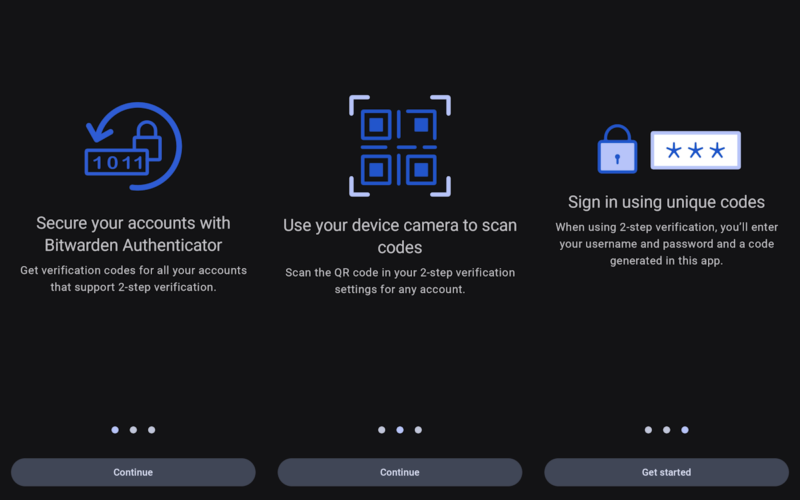Bitwarden has released a first public version of Bitwarden Authenticator, a two-factor authentication app for Android and iOS.
The app generates codes for services, which are then required to sign to accounts. This second step of authentication improves account security. Attackers would need access to the username and password, and the time-based code to gain access to the account.
The Bitwarden password manager supports generating two factor authentication codes already, but the feature requires a premium account. While supported, some users may prefer to separate the generation of two factor authentication codes from their password manager.
Bitwarden users may also use the authenticator to generate codes for access to Bitwarden’s password manager. It is also possible to use passkeys to sign in to Bitwarden.
The authenticator app is free to use, which means that it is available to all Bitwarden users and everyone else.
Tip: you can check out our list of the best authenticator apps for Android and iOS here.
Bitwarden Authenticator
Bitwarden Authenticator is available for iOS and Android. Like Bitwarden, it is an open source application. Interested users may access the GitHub repositories for Android and iOS.
The app does not require the password manager Bitwarden, it can be used as a standalone program. An account is not required either.
Bitwarden Authenticator works like other authenticator apps. The initial version offers basic functionality only, though.
A short intro explains the core concept on first run. Click on the plus icon to set up a new service. You may use the device’s camera to scan a QR code or type a code manually.
To get these, it is necessary to sign in to the account that you want to protect with two-factor authentication.
The authenticator app supports TOTP, which most online services do support.
The application does not support extra protection at this point. There is no option to set up a password. Other authenticator apps, for instance Aegis, support this security feature.
Data is backed up only as part of the phone’s backup. This is changing in the future. Google Authenticator added support for syncing 2FA codes last year.
Big plans
Bitwarden published a roadmap that highlights upcoming features. These improve the authenticator app significantly.
Here are the features that are in the works:
- Import option.
- Sync option with Bitwarden account and thus secure vault.
- Support for push-based 2FA.
- Account recovery.
- Workforce authentication.
Closing Words
The initial version of Bitwarden Authenticator is a bare bones authenticator app. You can add services to it to create authenticator codes for them.
On the plus side, it is open source and does not require Bitwarden or an account to use.
Downside is that it lacks features, for instance sync or password protection, that popular authenticators support. These are in development, however. Import could also be an interesting feature, provided that popular authenticator apps are supported.
The application is a good option for Bitwarden users who want to protect their account with another layer of protection, and have not done so already.
Uses who already use another authenticator app may want to wait until importing becomes available, as manual switching is cumbersome.
Do you use authenticator apps to protect your accounts? What is your preferred authenticator apps right now, and would you consider using Bitwarden Authenticator?
Summary
Article Name
Bitwarden launches standalone Bitwarden Authenticator app
Description
Bitwarden has released a first public version of Bitwarden Authenticator, a two-factor authentication app for Android and iOS.
Author
Martin Brinkmann
Publisher
Ghacks Technology News
Logo

Advertisement
Source link
lol

